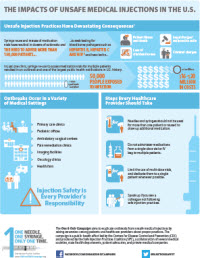Categories: Antimicrobial Resistance
March 7th, 2013 3:13 pm ET -
.

Dr. Currie
Guest Author – Dr. Currie
Montefiore Medical Center,
University Hospital and Academic Medical Center for the Albert Einstein College of Medicine
Today I would like to discuss a highly successful patient safety intervention designed to reduce the prevalence of CRE in the ICU units across Montefiore Medical Center (MMC) in the Bronx, N.Y. Funded by AHRQ, this effort used CDC’s infection prevention guidelines to reduce CRE prevalence and was intended to be exportable for replication at other acute care hospitals.
CRE has been widespread in NYC since 2006, including at our medical center. In NYC, CRE has been almost exclusively due to the Klebsiella pneumoniae carbapenemase gene (KPC). At our facilities 40% of the prevalence of KPC was due to patients who were already carrying CRE, prior to their transfer into our facilities from other acute and long term care facilities in the Bronx. My team worked to detect CRE using PCR-based lab tests and protect patients from picking up CRE by rapidly implementing contact isolation precautions for all positive patients.
Our baseline rate was established via weekly peri-rectal swab sampling of all ICU patients (94 beds in 7 units across 3 hospitals) during a four month period. Testing results were not shared with caregivers during the baseline period. However, all health care providers were educated about CRE/KPC and how to stop spread. After roll out, another sampling was initiated for another 4 months that included weekly sampling and sampling all new admissions on arrival on a daily basis. All results were reported within 3 hours of sample pickup and KPC positive patients were immediately placed on contact isolation.
I am thrilled to report that overall our facility reduced KPC in each unit by 53%. The remaining KPC prevalence was almost completely composed of patients who were known to be KPC positive on ICU admission, thus patient to patient transmission was virtually eliminated.
At Montefiore Medical Center, we continue our efforts to protect patients from the threat of CRE and other multi-drug resistant bacteria.
 Post a Comment -
Read more
Post a Comment -
Read more

Categories: Antimicrobial Resistance
March 6th, 2013 2:54 pm ET -
.

Michael Lin, MD, MPH
Guest Authors – Michael Y. Lin, MD MPH
Mary K. Hayden, MD
For the Chicago Prevention Epicenters Program
Increasingly, certain kinds of bacteria are causing serious infections that are difficult or impossible to cure because the bacteria are resistant to all or nearly all antibiotics. Carbapenem-resistant Enterobacteriaceae, or CRE, are one of the most feared group of these extremely drug-resistant bacteria; they are spreading worldwide, with few treatment options.
CRE are not equal opportunity bacteria; rather, they typically affect the sickest patients. These patients are cared for at a whole range of inter-connected healthcare facilities, from traditional hospitals to long-term care facilities.
In Chicago, CRE were not known to exist prior to 2007. When an increase in healthcare-associated CRE was detected in 2010, we partnered with CDC to develop a plan to combat CRE infections in our region.
Many questions exist regarding how to best control CRE, especially when it affects a whole region of healthcare facilities. The CDC, via its Prevention Epicenters program, has supported coordination of effort between local scientists such as ourselves and public health officials to try to understand how to best prevent the spread of CRE in Chicago so that lessons can be applied to other areas confronting CRE.
Through support from CDC, we are studying control strategies that fight the spread of CRE in facilities that care for the most vulnerable of our patients. Such control programs include region-wide efforts that combine proven strategies for infection control, such as (1) actively identifying and providing special precautions for patients who carry CRE, (2) improving healthcare worker hygiene practices, and (3) improving patient skin hygiene and applying a protective antiseptic. We will be analyzing the results of the program in late 2013.
In order to monitor the regional effects of the program, we are improving surveillance of CRE through active search strategies, such as periodically checking patients in Chicago intensive care units for CRE. We are also harnessing the power of communication, by growing public health information systems to promote timely sharing of infection control information between healthcare facilities.
In Chicago, we see a tremendous spirit of cooperation among healthcare facilities that is necessary to combat the common CRE threat.
 Post a Comment -
Read more
Post a Comment -
Read more

Categories: Antimicrobial Resistance
March 5th, 2013 2:00 pm ET -
.

Arjun Srinivasan, MD
Author – Arjun Srinivasan, MD
CDC’s Division of Healthcare Quality Promotion
Today in CDC’s March Vital Signs, we report on what could be the beginning of the end of antibiotics. Our arsenal of existing antibiotics is being overpowered by lethal germs called carbapenem-resistant Enterobacteriaceae (CRE). These germs affect people who are in or who recently had inpatient medical care. When someone gets a serious (bloodstream) infection from CRE, we have very few or no antibiotics to cure the problem. Up to half of patients will die. Adding to the concern of spread between people, CRE can spread their antibiotic-fighting weapons to other bacteria, potentially creating additional untreatable bacteria. New drugs won’t be here for many years, so we must do everything we can to preserve current antibiotics for as long as possible.
Here are other important facts to know about CRE:
- About 4% of US short-stay hospitals had at least one patient with a serious CRE infection during the first half of 2012. About 18% of long-term acute care hospitals had one. This totals almost 200 facilities.
- One type of CRE has been reported in medical facilities in 42 states .
- The most common type of CRE is also rising rapidly – there has been a seven-fold increase in its presence during the last 10 years.
So how do we stop the rise of these deadly, resistant CRE germs?
First, know that it can be done. CDC has mapped out specific guidelines that, when followed, can halt CRE infections before they become widespread in medical facilities and before they spread to otherwise healthy people in our communities. In fact, medical facilities in several states have reduced or stopped CRE rates by following CDC’s prevention guidelines. As further proof, Israel decreased CRE infection rates in all 27 of its hospitals by more than 70% in one year with a coordinated prevention program.
To learn specific steps tailored to CRE in your state, review CDC’s comprehensive CRE Prevention Toolkit, which provides CRE prevention guidelines for doctors and nurses, hospitals, long-term acute care hospitals, nursing homes, and health departments. The toolkit provides step-by-step instructions for facilities treating patients with CRE and for those not yet affected by it.
The entire medical system must act quickly to halt CRE infections before it’s too late. We cannot afford to miss this window of opportunity. Antibiotics are a shared resource and therefore preserving them is a shared responsibility. Are you doing everything that you can?
 1 Comment -
Read more
1 Comment -
Read more

Categories: Healthcare-associated infections, Injection Safety
November 28th, 2012 10:28 am ET -
.

The Impacts of Unsafe Medical Injections in the U.S.
Author: Centers for Disease Control and Prevention
Injection safety is part of the minimum expectation for safe care anywhere healthcare is delivered; yet, CDC has had to investigate outbreak after outbreak of life-threatening infections caused by injection errors. How can this completely preventable problem continue to go unchecked? Lack of initial and continued infection control training, denial of the problem, reimbursement pressures, drug shortages, and lack of appreciation for the consequences have all been used as excuses; but in 2012 there is no acceptable excuse for an unsafe injection in the United States.
Eradicating unsafe practices will take a multifaceted approach, and now is the time for action to ensure that no additional patients are harmed through unsafe injections. Today, the CDC and the Safe Injection Practices Coalition released new materials to make it easier for clinicians and others working in healthcare to learn and train others about following safe injection practices.
Two Birds with One Stone: Bloodborne Pathogen Training + Patient Safety – Enhanced PowerPoint
Healthcare providers or training managers who need to keep staff current on bloodborne pathogens training can now use a new presentation: “Safe Injection Practices: Protection Yourself and Your Patients – A Bloodborne Pathogens Training Activity.” This training was created to remind healthcare providers that measures they take to protect themselves from bloodborne pathogens and other exposures also protect patients from healthcare-associated infections. View the training on the One & Only Campaign’s website.
 Post a Comment -
Read more
Post a Comment -
Read more

Categories: Antibiotic use, Long Term Care (LTC)
November 16th, 2012 8:47 am ET -
DHQP

Matthew Wayne MD, CMD
Author – Matthew Wayne MD, CMD,
Chief Medical Officer for CommuniCare Family of Companies,
President of the American Medical Directors Association (AMDA)
So, you’ve recently taken antibiotics and you’ve now developed a case of disturbing diarrhea. Should you be concerned? Maybe so…
Antibiotic-associated diarrhea refers to diarrhea that develops in a person who is taking or recently took antibiotics. One of the most serious causes of antibiotic-associated diarrhea is Clostridium difficile (C. difficile) infection – a major cause of acute diarrhea in long-term care facilities. Not only does C. difficile cause discomfort, it actually results in nearly 14,000 deaths every year—90% of these involve people aged 65 or older. People who have recently taken antibiotics are at greatest risk for C. difficile, which is yet another reason we need to use these medications carefully in our nursing homes and long-term care facilities.
 1 Comment -
Read more
1 Comment -
Read more







